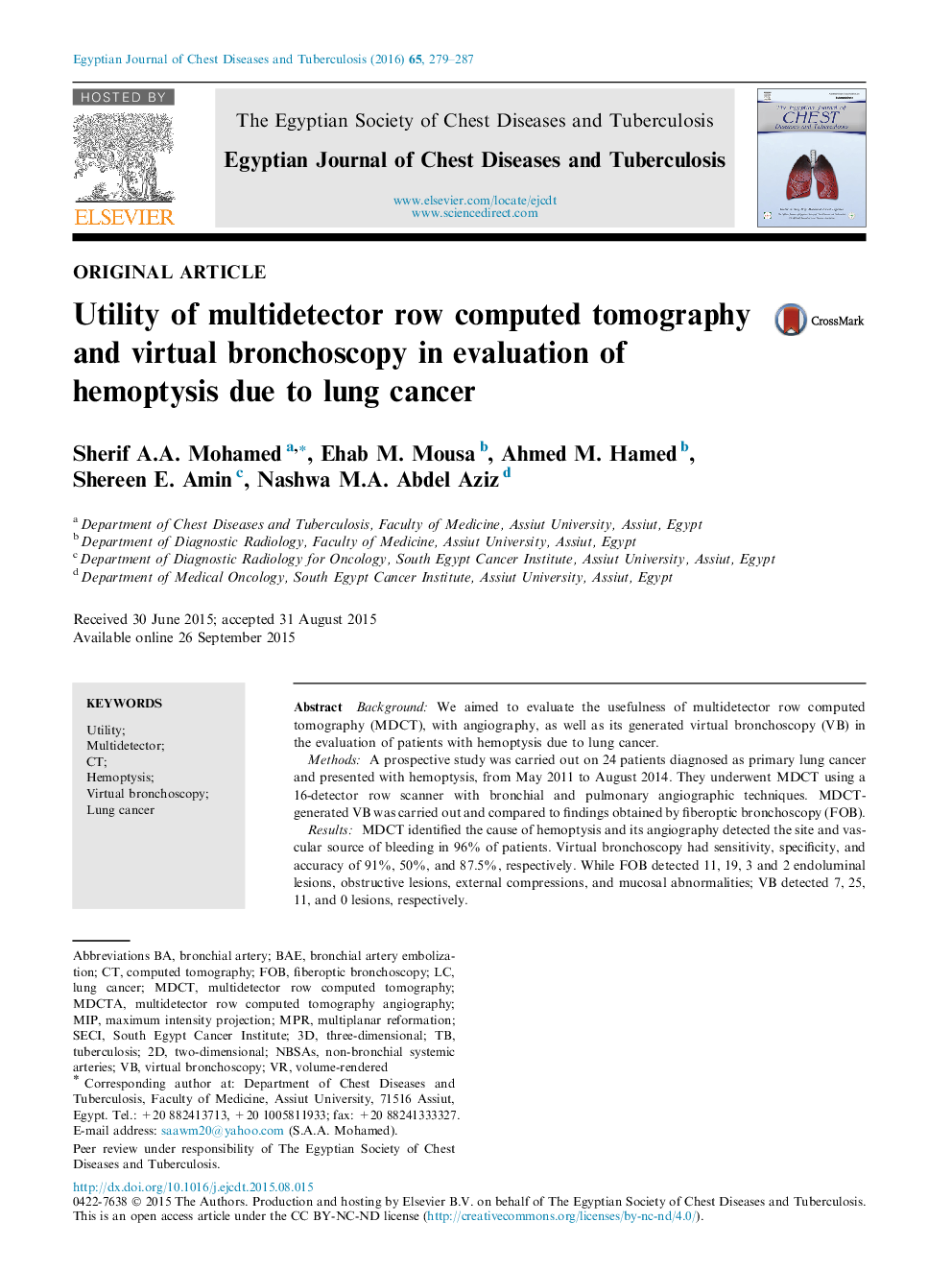| Article ID | Journal | Published Year | Pages | File Type |
|---|---|---|---|---|
| 3399916 | Egyptian Journal of Chest Diseases and Tuberculosis | 2016 | 9 Pages |
BackgroundWe aimed to evaluate the usefulness of multidetector row computed tomography (MDCT), with angiography, as well as its generated virtual bronchoscopy (VB) in the evaluation of patients with hemoptysis due to lung cancer.MethodsA prospective study was carried out on 24 patients diagnosed as primary lung cancer and presented with hemoptysis, from May 2011 to August 2014. They underwent MDCT using a 16-detector row scanner with bronchial and pulmonary angiographic techniques. MDCT-generated VB was carried out and compared to findings obtained by fiberoptic bronchoscopy (FOB).ResultsMDCT identified the cause of hemoptysis and its angiography detected the site and vascular source of bleeding in 96% of patients. Virtual bronchoscopy had sensitivity, specificity, and accuracy of 91%, 50%, and 87.5%, respectively. While FOB detected 11, 19, 3 and 2 endoluminal lesions, obstructive lesions, external compressions, and mucosal abnormalities; VB detected 7, 25, 11, and 0 lesions, respectively.ConclusionMDCT angiography is a useful and non invasive method that allows a rapid and detailed identification of abnormal vasculature responsible for hemoptysis in patients with lung cancer. MDCT-generated virtual bronchoscopy is an accurate, and non invasive method for evaluating obstructions, endoluminal masses, and external compressions in patients with hemoptysis due to lung cancer.
